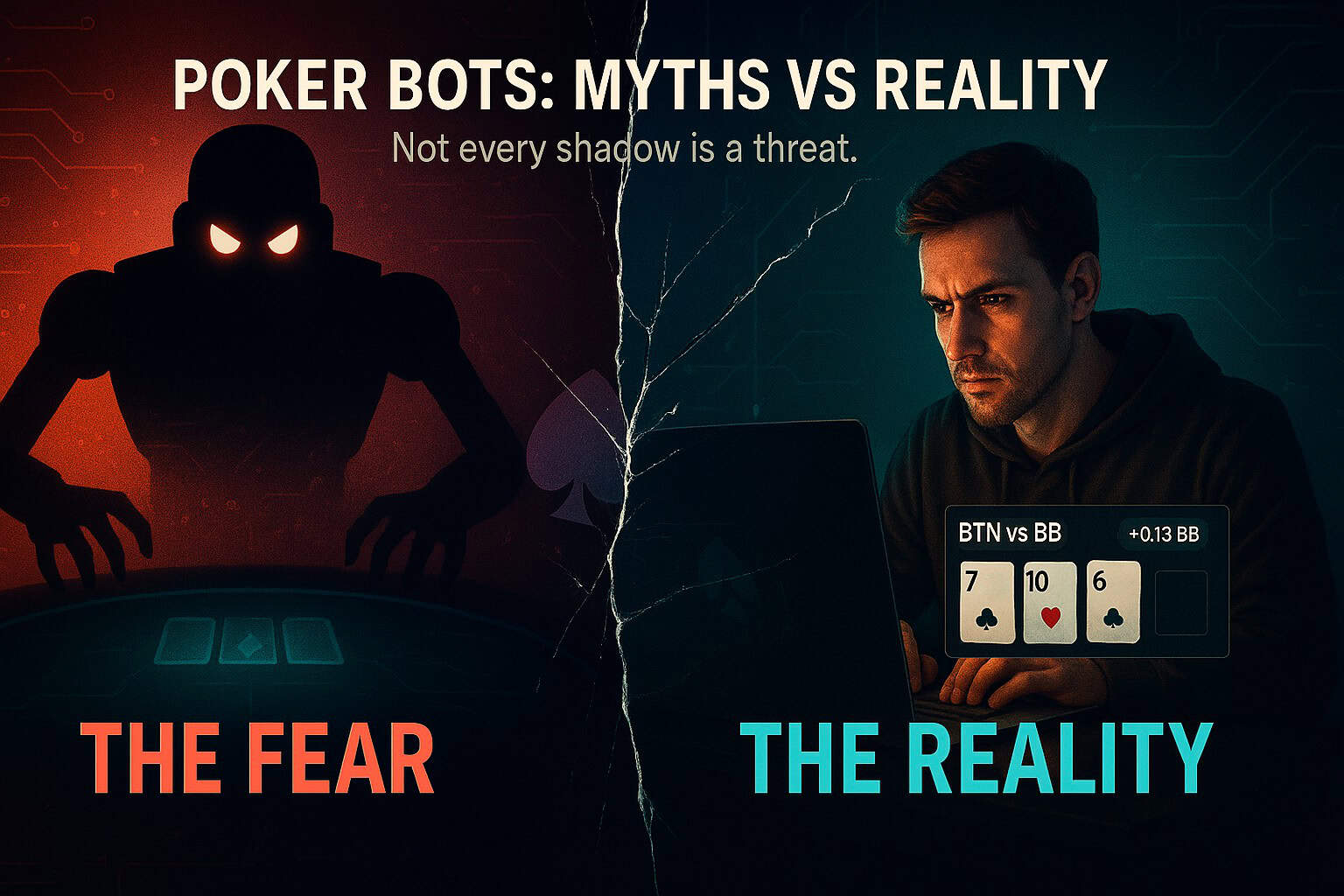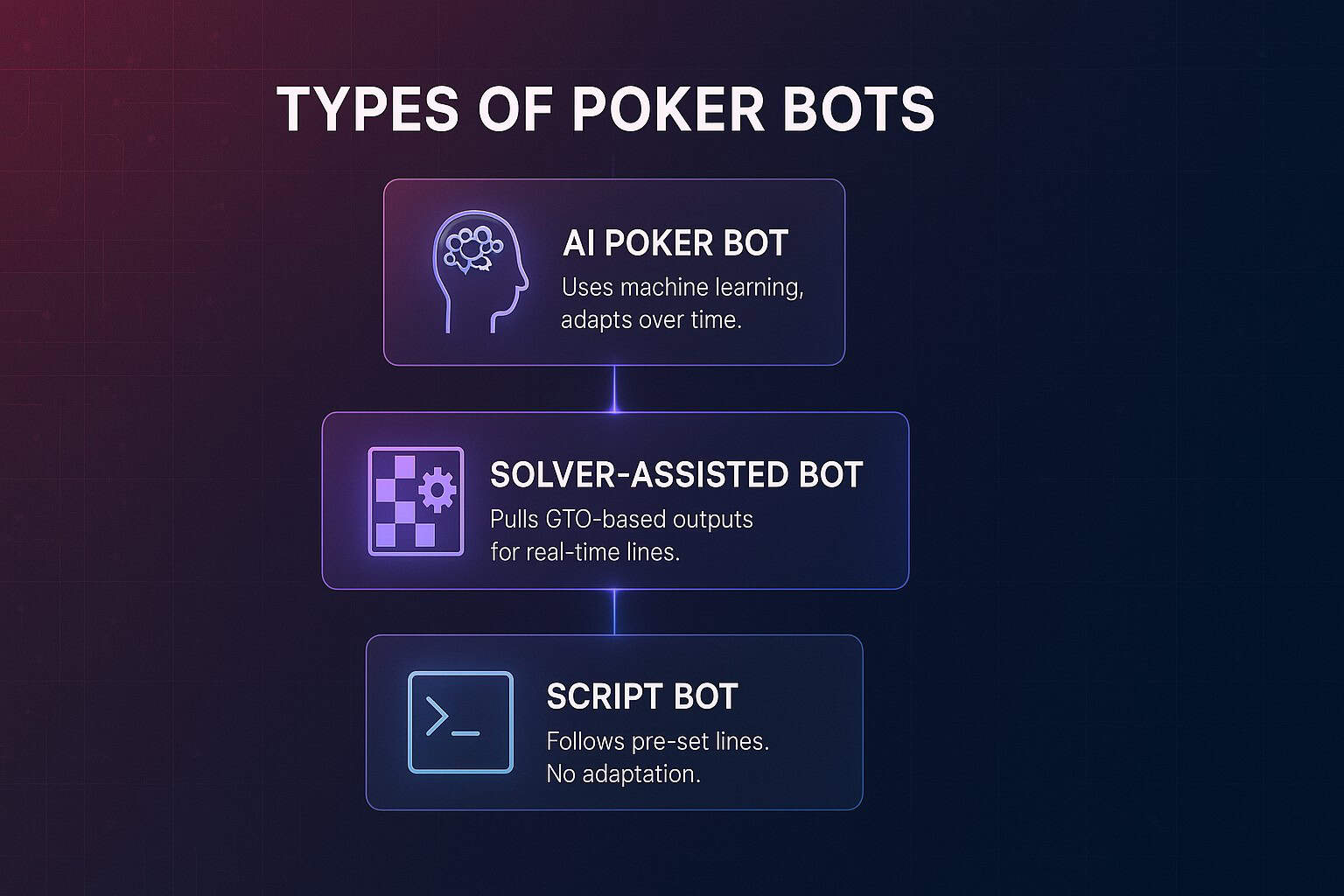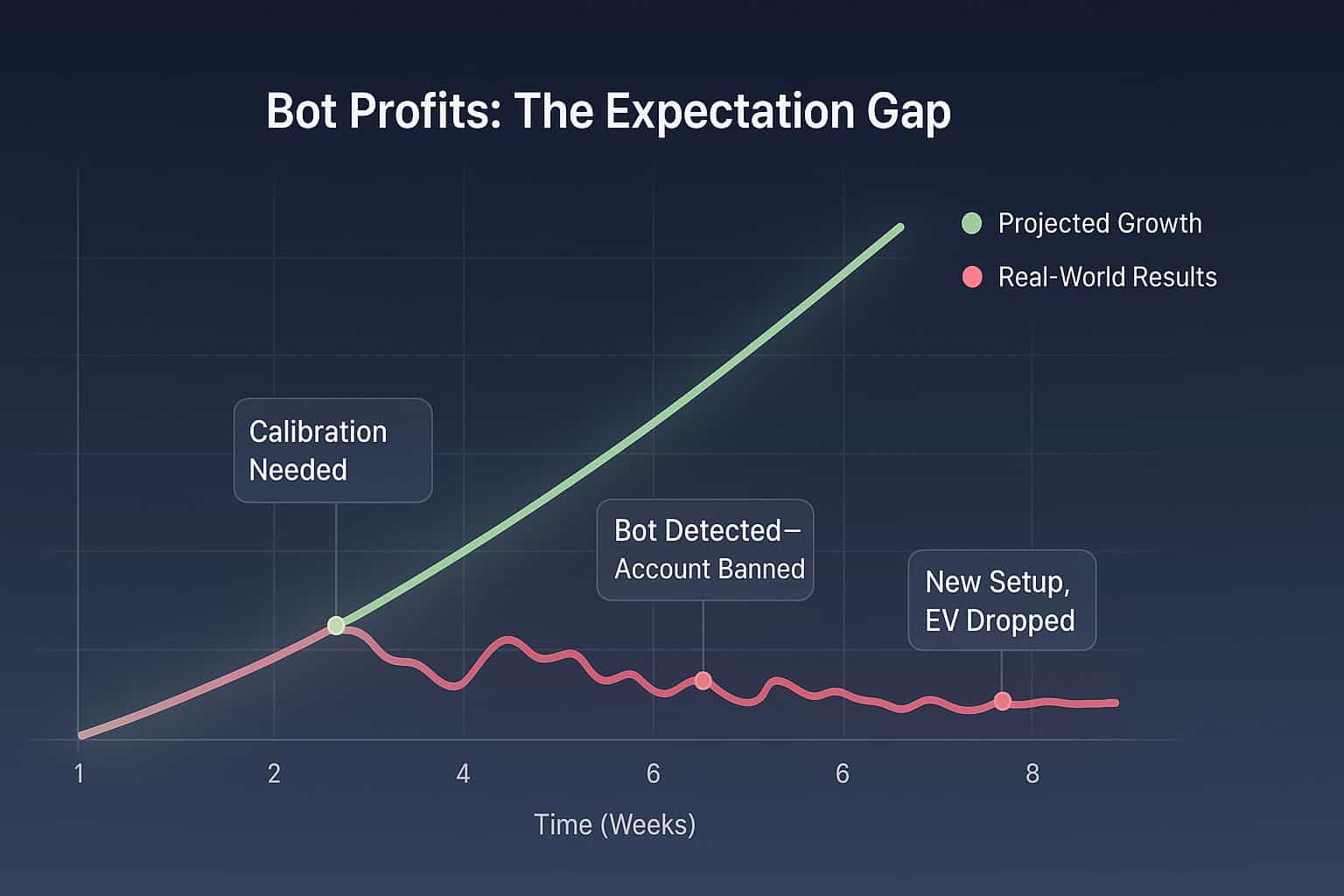
Poker Bot Myths That Just Won’t Die
Poker bots: the most talked-about, misunderstood, and mythologized force in online poker.
To some, they’re a shadowy menace destroying fair play. To others, they’re misunderstood tools for learning. And for a select few… they’re just a profitable secret.
But here’s the truth: most players don’t really understand what poker bots are, how they work, or what they can—and can’t—actually do. That’s why today we’re breaking down the most common poker bots myths and showing what’s real and what’s not.
So let’s dig into the seven most persistent myths about poker bots, and separate fact from fiction.
Poker Bots Myth #1: “Poker Bots Are Illegal Everywhere”
This one sounds obvious—but it’s not that simple.
Most online poker platforms prohibit the use of bots in their terms of service. But that doesn’t mean bots are “illegal” in the legal sense. Outside of regulated jurisdictions, there are no criminal penalties for using a bot.
What’s really at stake?
- Account bans
- Confiscation of funds
- Site-wide blacklists
The keyword here is: against the rules, not against the law.
That said, in some tightly regulated countries (like France or Spain), bots may fall under gambling fraud laws. But in most of the world? It’s the platform—not the government—enforcing the rules.
Poker Bots Myth #2: “All Bots Are Created Equal”

Definitely false.
There’s a massive gap between:
- Script-based bots that follow static lines
- Solver-integrated RTAs that pull live GTO calculations
- Machine-learning poker bots like PokerX (by PokerBotAI), Pluribus or DeepStack
Some bots are clunky, easy to spot, and lose over time. Others blend in, adapt, and even adjust to player tendencies.
The rise of AI poker bot platforms like PokerAlfie, or underground setups powered by GPT-style models, means today’s bots are increasingly hard to categorize—or detect.
Bottom line? Not all bots are the same. Some are dumb, some are terrifyingly smart. And some are hybrids that require human input at key decision points.
Poker Bots Myth #3: “You Can Easily Spot a Bot at the Table”

This used to be true.
Classic bots exhibit giveaway features:
Never speaking
• Acting immediately or in ideal delay
• Playing tight or mechanical GTO lines
Modern day pokerbots, though, are designed to mimic humans. They randomize timing, simulate misclicks, and even pause when they “sense” players are watching.
Some even change their behavior across sessions to avoid pattern detection.
Unless you’re using specialized software—or reviewing thousands of hands—you probably can’t spot one anymore.
Poker Bots Myth #4: “Poker Sites Don’t Do Enough to Stop Bots””
This is outdated.
All of the large platforms today implement sophisticated bot detection methods:
- Mouse movement analysis
- Click-timing fingerprints
- Solver-pattern matching
- Device and IP Monitoring
- Real-time behavioral audits
Platforms like GGPoker and PokerStars employ full-time staff dedicated to catching bots—some of whom use AI models that were pre-trained on bot behavior.
Still, bots remain an issue. But to say sites aren’t fighting back is to ignore a huge amount of behind-the-scenes effort.
The problem? The best bots evolve just as fast.
Poker Bots Myth #5: “Using a Poker Bot Is a Shortcut to Easy Money”

One of the most dangerous poker bots myths is that using them guarantees easy money.
If only.
Here’s what most people don’t realize:
- Most bots are losing bots
- The ones that win require constant calibration
- Detection risk is always present
- Traffic conditions, metagame shifts, and site updates break bots
Even with a good setup, you’re not printing cash. You’re babysitting code, avoiding detection, and fighting diminishing returns.
In fact, many bot users end up making less than decent grinders, especially after account bans and resets.
There’s no “set it and forget it” success here. There’s only risk management, tech tuning, and relentless upkeep.
Poker Bots Myth #6: “Bots Only Play Perfect GTO”
Big misconception.
Bots are most often built on exploitative rather than pure GTO. And even the ones using solvers like Pio or GTO Wizard reduce output to playbooks or weighted decision trees.
A few programs (e.g., Lucid Trainer or PokerAlfie) favor real world outcomes rather than direct solver imitation.
Even “perfect” bots deviate:
- To maximize EV vs weak players
- To avoid being detected
- Because full GTO is computationally expensive
So no, bots aren’t perfect machines. They cut corners. They guess. And they bluff—just like you do.
Poker Bots Myth #7: “If You’re Not Using a Bot, You’re Falling Behind”
This is fear-based nonsense.
Yes, bots exist. Yes, AI is advancing. But the best players still crush because they:
- Study better
- Adjust faster
- Understand why they’re betting—not just what to bet
The edge isn’t gone. It’s just moved.
In fact, more players are now using AI ethically—as part of study routines, off-table drills, or post-session reviews. Tools like:
- GTO Wizard
- Lucid Trainer
- PokerAlfie’s human mode
These help you learn from bot logic—without violating rules.
The smart play? Use AI to train, not cheat.

So… Are Bots Ruining Online Poker?
The reality behind poker bots myths is that the answer depends heavily on where you play.
If you’re grinding unregulated anonymous apps? Bots are everywhere.
But on licensed, audited platforms with real oversight? Bots are present—but under pressure.
The most dangerous bots today are:
- Semi-automated
- Shared across teams
- Used as part of hybrid RTA strategies
But these are high-risk, high-maintenance, and increasingly trackable.
Final Thought: Know the Myths. Play Smart.
The age of the poker bot isn’t fantasy—it’s reality. But so is the fight against them.
If you:
- Believe bots are unbeatable? You’ll play scared.
- Think bots are your ticket to riches? You’ll likely get burned.
- Understand what bots can and can’t do? You’ll have the edge.
Understanding poker bots myths is the first step to playing smarter and staying ahead. Because in the end, the best counter to a bot isn’t software. It’s smart, adaptive, disciplined play—powered by a human brain trained better than any algorithm.
